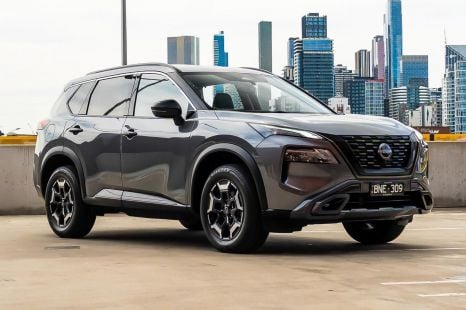

William Stopford
2026 Nissan X-Trail review
13 Hours Ago
GWM's newest model in Australia looks unique, but it's a miss in the brand's ever-improving local SUV lineup.
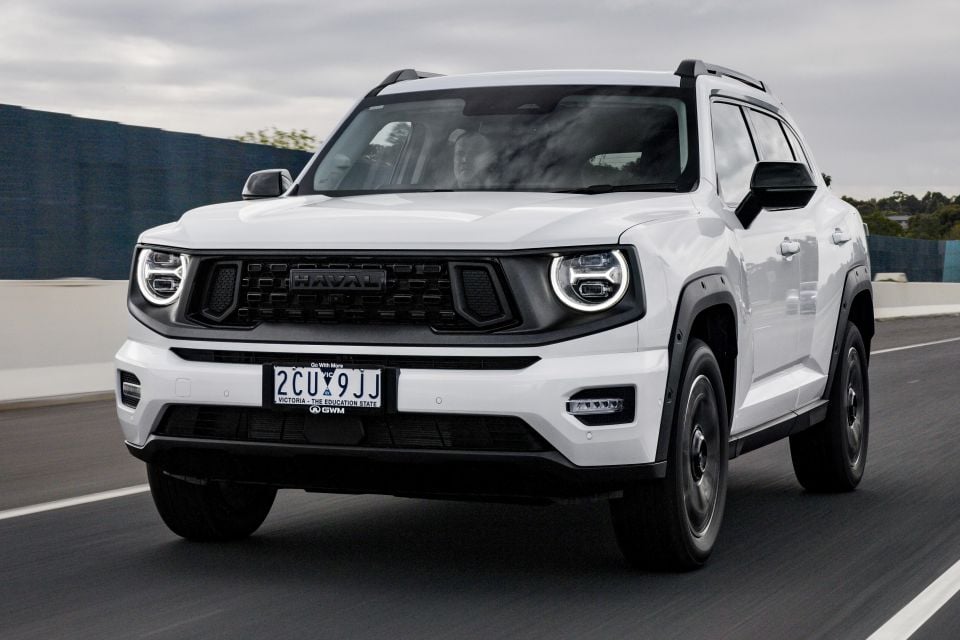


Quickly see how this car stacks up against its competition. Select any benchmark to see more details.
Where expert car reviews meet expert car buying – CarExpert gives you trusted advice, personalised service and real savings on your next new car.
The Big Dog is in the yard: GWM’s new Haval H7 has just landed in Australia.
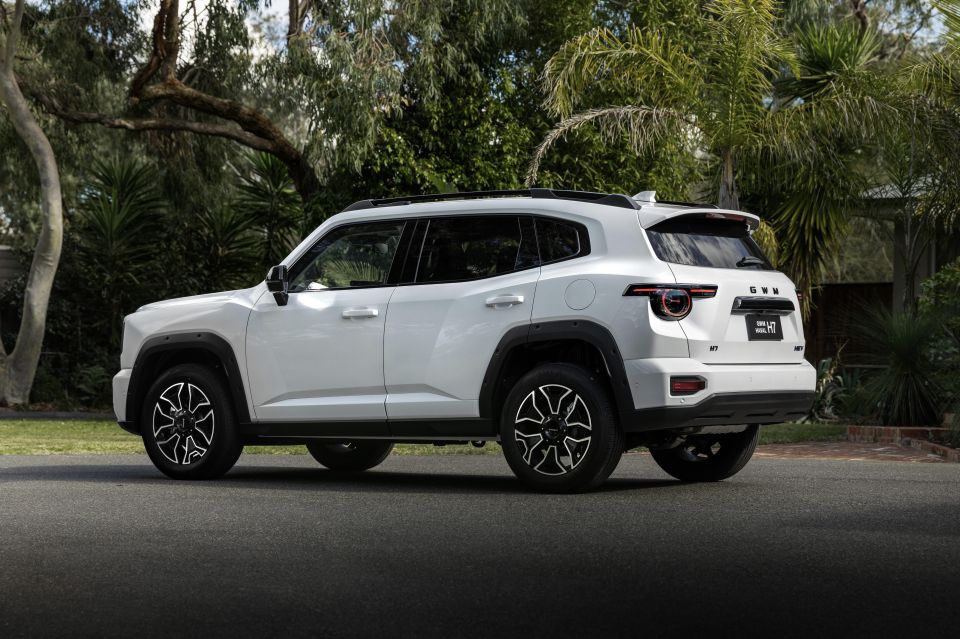
In keeping with interestingly named (if not corny-sounding) Chinese-market GWM models like the Good Cat and Cool Dog, which are boringly rebranded as the Ora and Haval H3 for export markets, the Haval H7 is the export name for a mid-size SUV otherwise known as the Big Dog.
The second-generation Big Dog launched in China in 2023, and is based on GWM’s LEMON modular monocoque platform that underpins many vehicles like the H6 and the smaller Jolion SUVs.
Between LEMON, Big Dog, and the rest of GWM’s lineup in China, these names are certainly a lot of fun. Alas, H7 it is for us in Australia.
As has been the case with its other SUVs, the H7 is joining the GWM Australia range under the diminishing Haval SUV brand that’s returning to ‘just another model name’ within the brand’s broad portfolio – much like the Cannon ute and Tank large SUV model ranges.
Within the Haval brand, the H7 is one of the more unique-looking models now on sale. With loads of body cladding, aggressive body lines, and a plethora of exposed fake bolt heads, it’s hard to deny that it looks like one of GWM’s most rugged SUVs yet.
Disappointingly, its on-paper specs don’t do the chunky visuals justice. A small-displacement engine, hybrid system, front-wheel drive, and tyre repair kit don’t scream off-roader, but they underpin the H7.
Sure, if you wanted a rugged GWM you’d buy a Cannon or a Tank, but the H7’s tough-guy looks belie its mechanical and interior packages, which nevertheless fit nicely alongside its Haval brethren.
What’s the H7 all about, and should you buy one instead of an H6?
The sole Vanta variant of the Haval H7 is priced at $46,990 drive-away, making it GWM’s most expensive non-plug-in hybrid SUV based on a car-like monocoque platform.
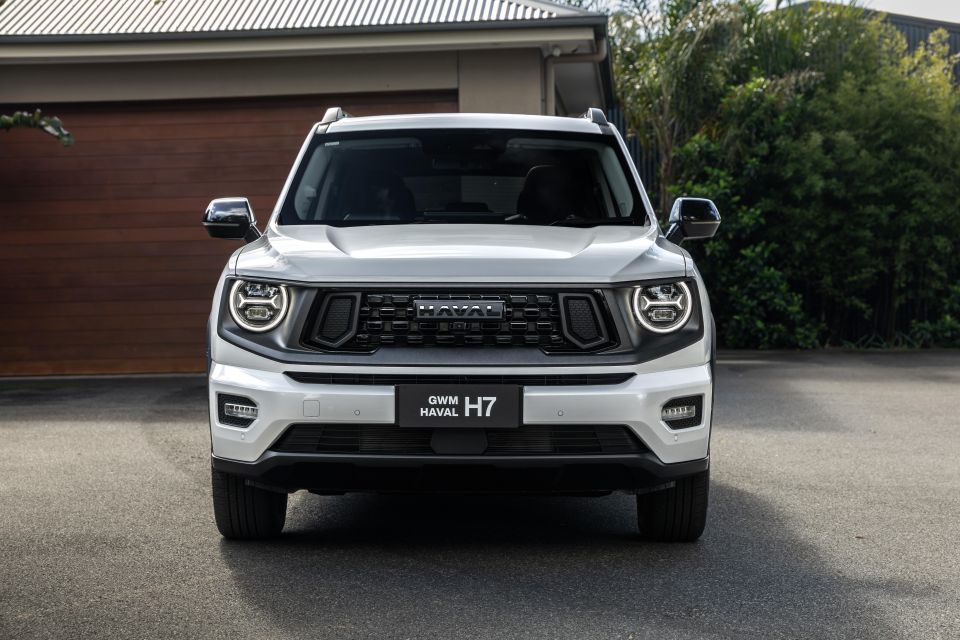
| Model | Drive-away pricing |
|---|---|
| 2025 GWM Haval H7 Vanta | $46,990 |
As a mid-size SUV, the H7 competes in Australia’s biggest and most competitive new-vehicle segment. Compared to its stablemates, the H7 is pricey: it costs more than the top-spec H6 Ultra Hybrid ($43,990 drive-away) and H6 GT Ultra ($45,990 drive-away).
The H6 plug-in hybrid (PHEV), meanwhile, starts at $47,990 drive-away. It’s not far off the off-road-ready Tank 300 large SUV either, which starts at $49,990 for petrol models, even if the Tank 300 Hybrid costs $56,990 drive-away.
That’s a fair bit to fork out for the H7, especially compared to other GWMs. Outside of that, there are other natural mid-size SUV rivals like the top-selling Toyota RAV4 (up to $51,410 before on-roads for 2WD hybrids).
Front-wheel drive Mitsubishi Outlander models top out at $47,790 before on-roads, while you can get into an all-wheel drive Mazda CX-5 for $42,960 before on-roads.
To see how the GWM Haval H7 stacks up against its rivals, use our comparison tool
Buy your new car without the stress. It's fast, simple and completely free.

Great service from Travis and team, second time I have used this business would not hesitate to recommend them to anyone
Craig C.
Purchased a Ford Ranger in Sunshine Coast, QLD
CarExpert helped Craig save $7,224 on his Ford Ranger, now let us save you on your next new car.
Get your BEST priceWell-appointed, with little done wrong.
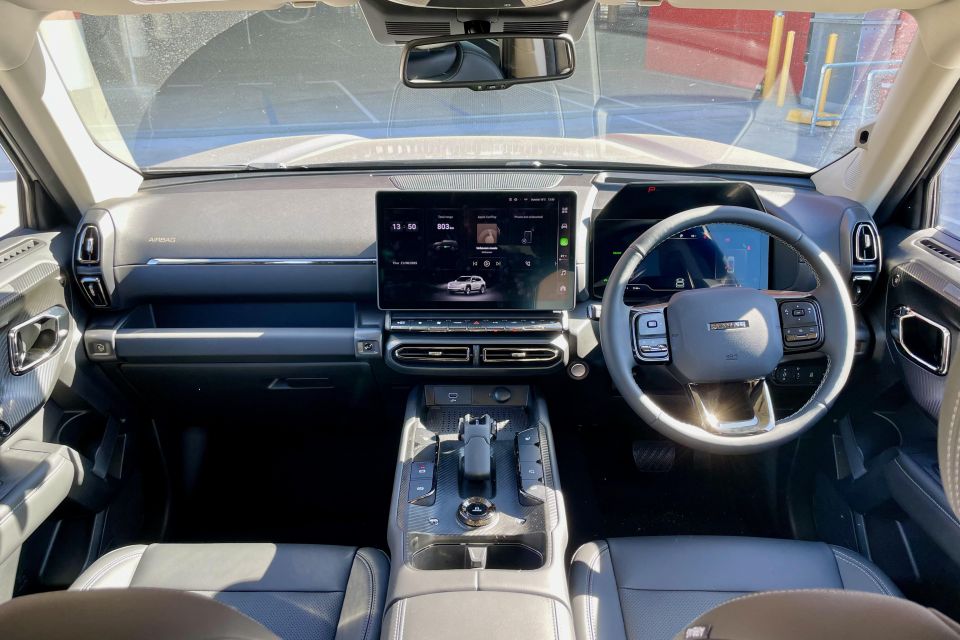
Digital screen lovers will be pleased to know that GWM hasn’t skimped out. Front and centre is a 14.6-inch multimedia touchscreen, which looks fine and responds to inputs with little lag, though you will notice some hesitation when swiping faster.
There are large, easy-to-read icons on its home screen, along with a ribbon down the right-hand side for shortcuts to smartphone mirroring and climate control, among other functions. This ribbon doesn’t stay in place when smartphone mirroring is active, but you at least have an array of physical climate controls below.
Pressing any of these buttons will automatically open the screen’s climate menu, even when using smartphone mirroring. There’s quite a lot happening on this menu and it can appear cluttered on the move, so it’s better to rely on the physical buttons – you’ll still have to use the screen to adjust temperature.
We didn’t have any issues with the H7’s infotainment tech during our week with the car, a trend continued by the digital instrument cluster.
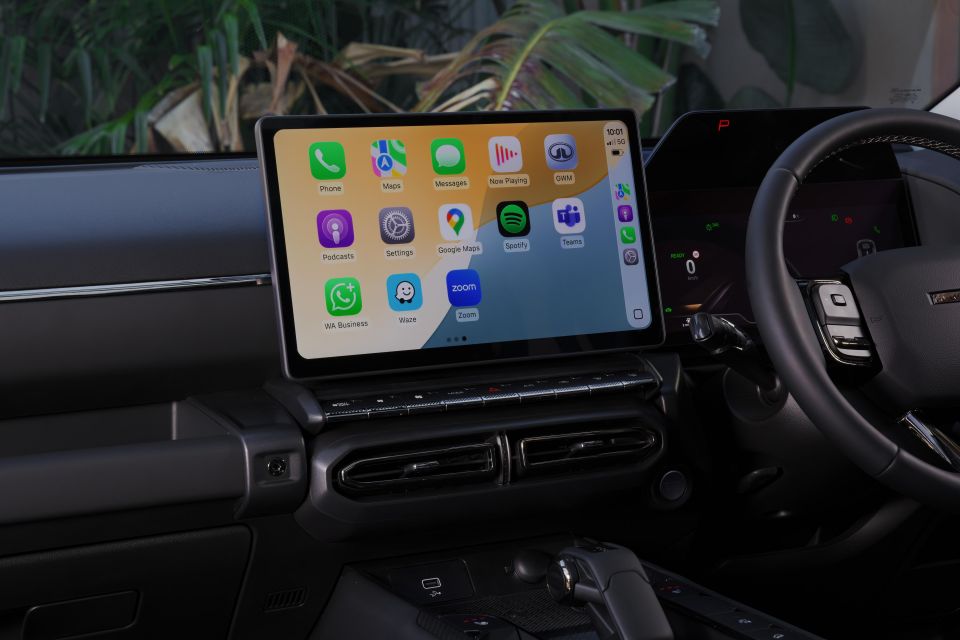
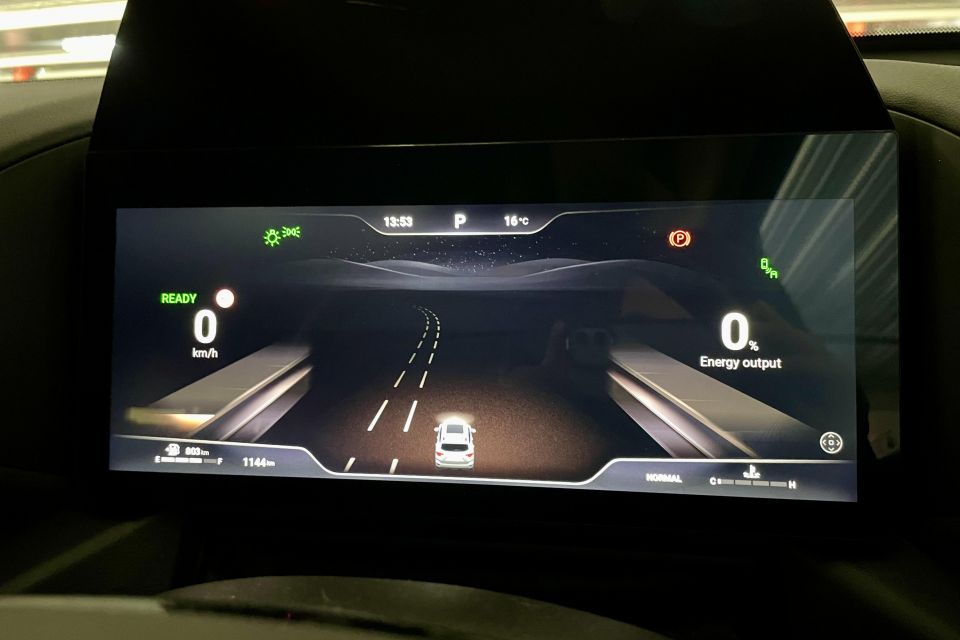
This 10.25-inch unit is practically identical to that in most other GWM cars, with a simple layout making it convenient to live with. There isn’t much customisability, but you can scroll through the rightmost portion for trip info.
To do this, press the bottom-middle button on the right side of the steering wheel. This cleverly shifts the right-hand directional buttons to control the instrument display instead of infotainment, which makes sense once you’re used to it.
More broadly, the steering wheel is also very similar to other GWMs, which means we have the same complaints. Its horizontal spokes are still too large and obscure the stalks behind, but it’s at least better here because the cruise controls have been moved to the steering wheel’s buttons instead of a third stalk.
These spokes also make the wheel uncomfortable to hold at 9 and 3 o’clock, as it’s awkward to wrap your fingers around the back. Still, its buttons are all physical and feel nice to use, while the leather finish is plush.
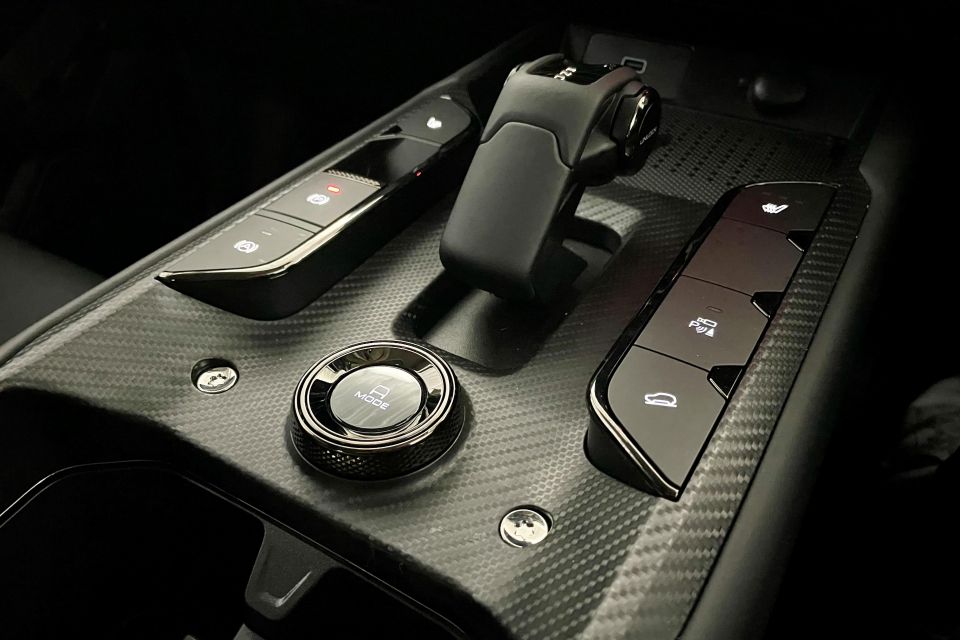
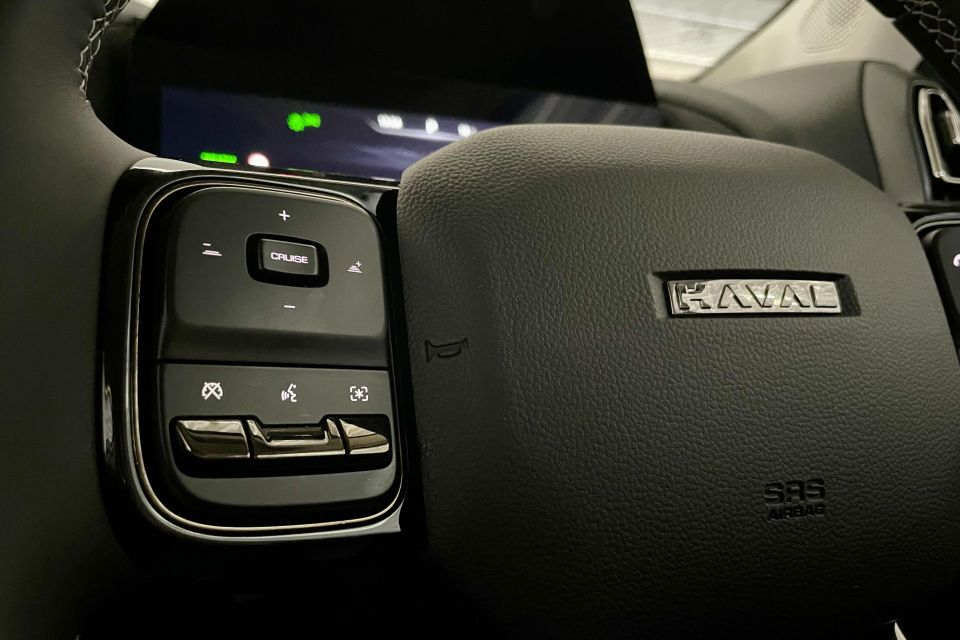
You’ll probably have noticed the quirky design cues going on around the cabin. The main one is the use of dull-finish faux carbo- fibre, which is seen on the centre console and door cards – often adorned with fake Torx bolts.
Then there are the interesting shapes and air vent placements, as well as GWM’s typical aviation-style gear selector. There are chunky grab handles on the doors, which are almost too big for their own good and make it awkward to fold your hand underneath to reach the window switches.
The door bottle holders also sit at a 45-degree angle and use an elastic strap to keep things in place. All this is nothing if not unique, and it certainly gives character to a car that would otherwise be another screen-fest.
You get other storage items like a tray-like area in front of the passenger, two cupholders, a tray under the gear selector, and a cooled central storage box – which also includes a removable tray for smaller odds and ends.
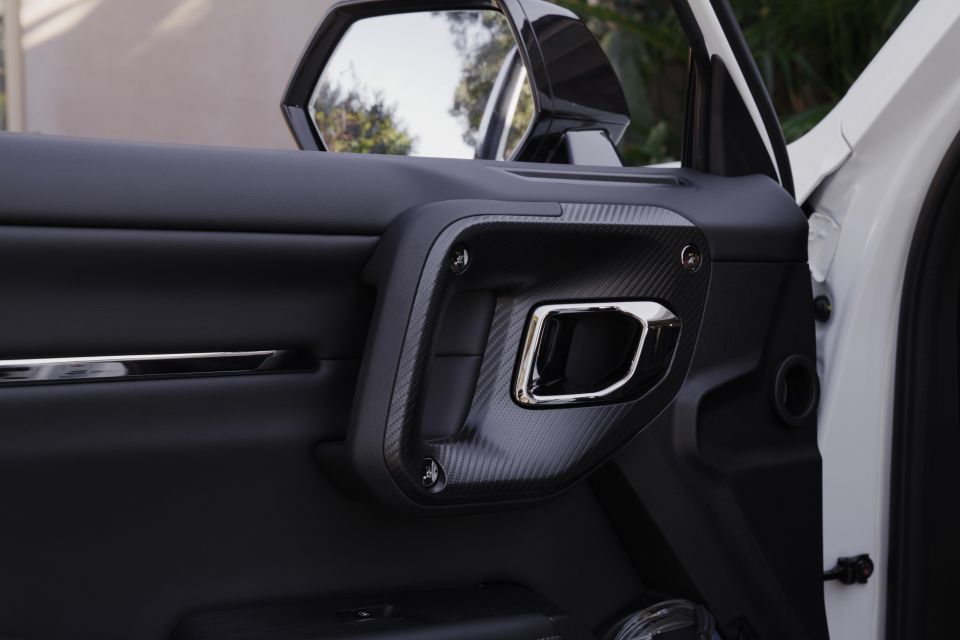
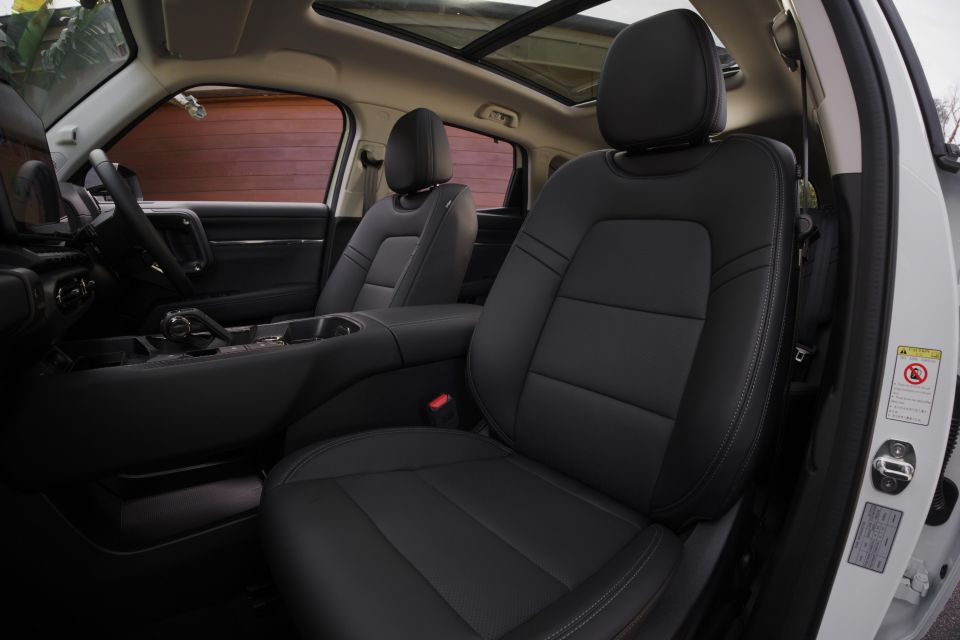
Connectivity-wise, there’s wireless smartphone mirroring as standard, while you get a USB-A port ahead of the gear selector, plus a wireless phone charging pad and a 12V outlet too.
There’s a bizarre panel on top of the instrument display, which seems to serve no purpose other than to tell you which gear is selected. Even then its purpose is limited, as there’s already a PRND readout on the instrument display itself.
Weirder still, an ‘M’ can be seen at the end of the lit-up PRND display in sunlight, which presumably denotes ‘Manual’ mode… even though the car has no manual mode. This feels like a lack of attention to detail, or at least a dig through the parts bin.
Otherwise, the seats are comfortable and offer a good degree of adjustability, which is needed given the steering wheel’s relatively limited range of motion. All the other key touch points are soft, and nothing feels too far out of reach when you’re in a normal seating position.
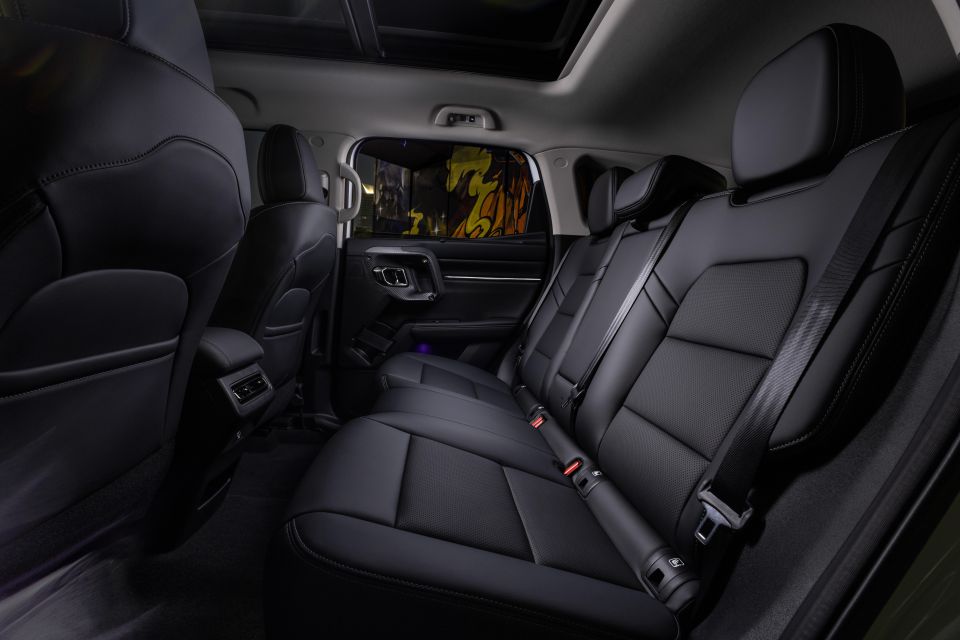
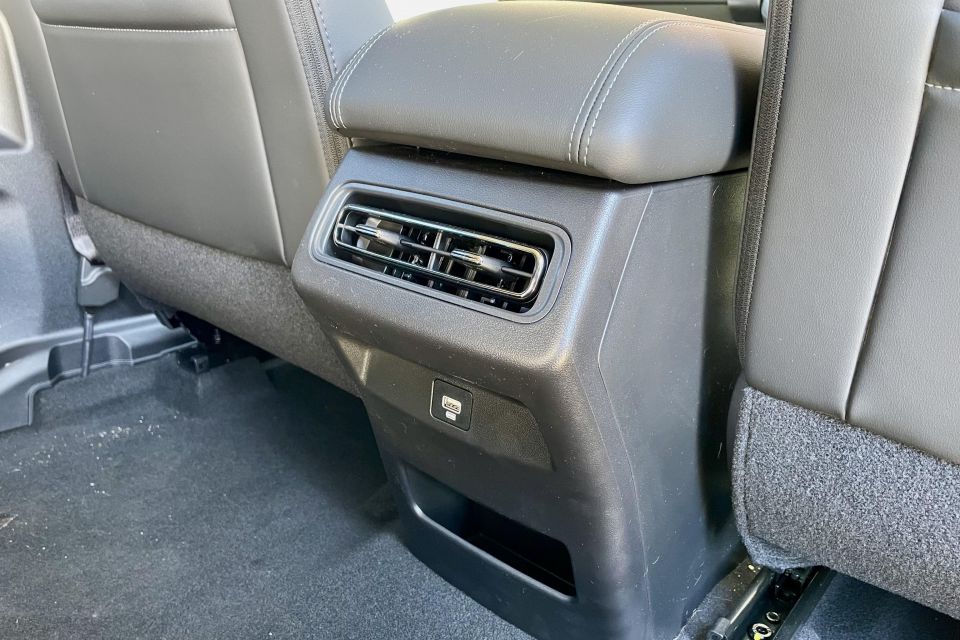
The second row isn’t nearly as well-appointed, but there’s a mountain of room back here. In my standard 173cm driving position, I could sit behind the driver’s seat with plenty of legroom to spare.
The front seats also sit fairly high off the ground, providing ample toe room, and there’s heaps of headroom too. The H7 looks big outside, and it seems GWM has been able to take advantage of that by maximising interior space.
Amenities are limited to dual rear-facing air vents and a single USB-A port on the back of the centre console. There’s also an awkwardly sized cut-out underneath, and a fold-down centre armrest with cupholders and map pockets on the front seatbacks.
The door cards feature the same large grab handles as up front, as well as those elastic bottle holders.
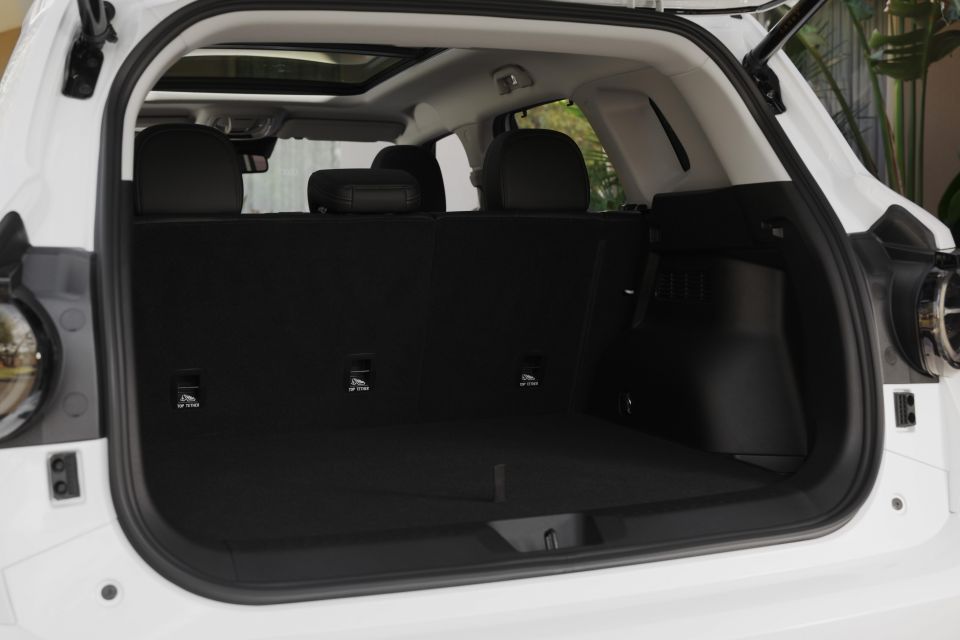
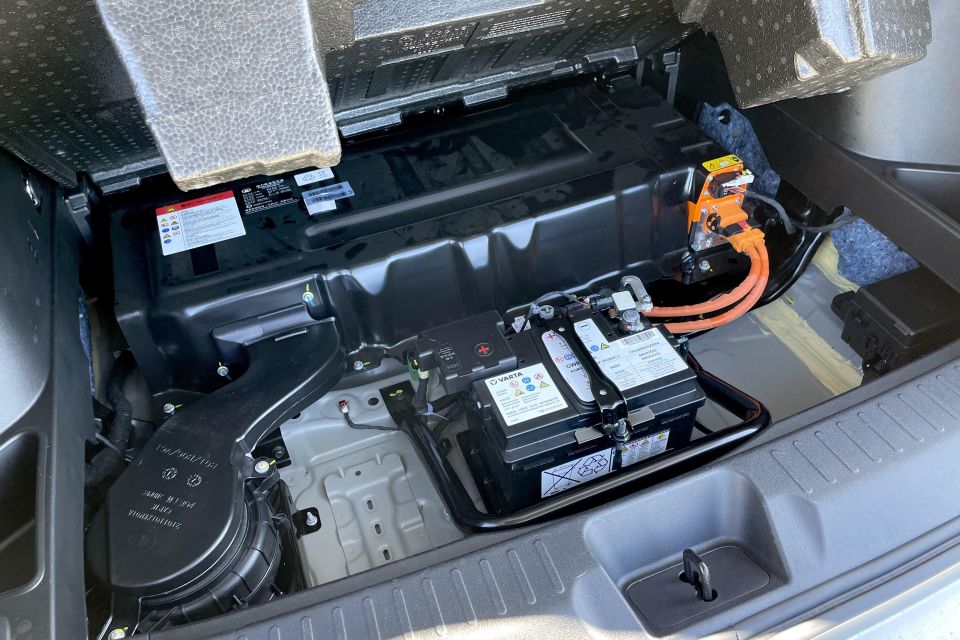
The boot is similarly large, though its 483-litre capacity in five-seat mode is smaller than a RAV4’s 542L. Still, there’s plenty of space here for cargo, and the load floor sits at a comfortable height to lift things in.
A power tailgate is standard, and there are additional storage nooks at each side. It’s disappointing that there’s no additional storage beyond that, as lifting the boot floor reveals a polystyrene panel that secures a tyre repair kit.
That’s because there’s no spare wheel at all, which isn’t at all ideal for an SUV, let alone one that’s touted as an ‘adventurer’. Lifting the polystyrene reveals poor packaging, with significant empty space around the car’s 12V battery.
The rest of the underfloor area is taken up by other driving-related componentry, so it’s au revoir, spare wheel.
| Dimensions | GWM Haval H7 |
|---|---|
| Length | 4705mm |
| Width | 1908mm |
| Height | 1780mm |
| Wheelbase | 2810mm |
| Cargo capacity | 483-1362L |
To see how the GWM Haval H7 stacks up against its rivals, use our comparison tool
The H7’s hybrid system comprises a 1.5-litre four-cylinder turbo-petrol engine producing 110kW of power and 230Nm of torque on its own, paired with an electric motor outputting 130kW and 300Nm. Drive is sent to the front wheels exclusively through a ‘Dedicated Hybrid Transmission’.
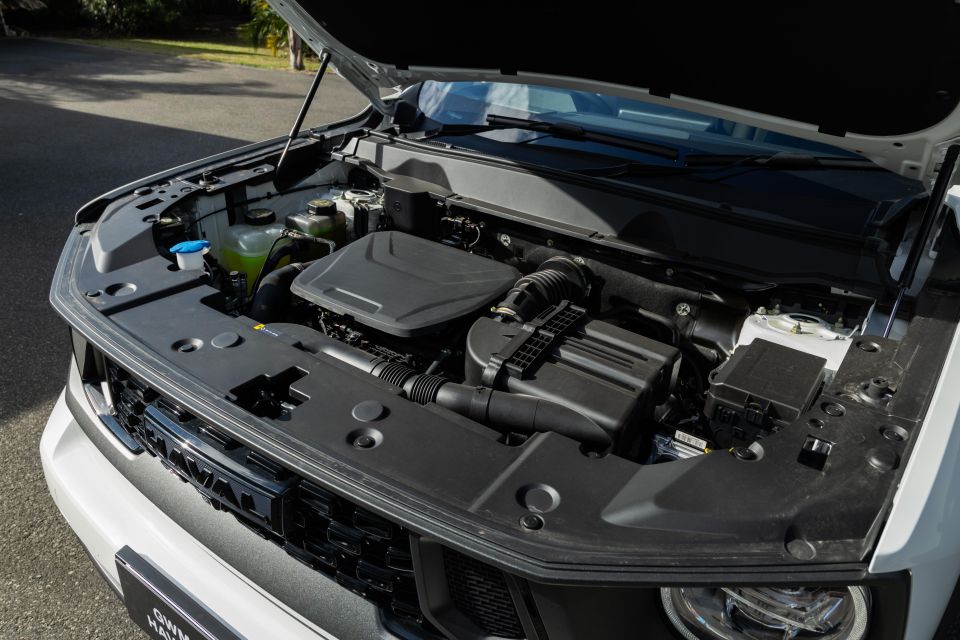
| Specifications | GWM Haval H7 |
|---|---|
| Engine | 1.5L 4cyl turbo-petrol hybrid |
| Engine outputs | 110kW/230Nm |
| Electric motor outputs | 130kW/300Nm |
| System outputs | 179kW/530Nm |
| Transmission | Dedicated Hybrid Transmission (DHT) |
| Drive type | Front-wheel drive |
| Kerb weight | 1810kg |
| Fuel economy (claimed) | 5.7L/100km |
| Fuel economy (as tested) | 7.3L/100km |
| Fuel tank capacity | 61L |
| Fuel requirement | 91-octane regular unleaded |
| CO2 emissions | 131g/km |
| Emissions standard | Euro 5 |
| Braked tow capacity | 1500kg |
Our week with the H7 primarily involved highway driving, though there was a day of higher-demand driving thrown in while CarExpert’s video team filmed a review for YouTube.
For context, the H6 Hybrid’s claimed fuel economy is better than that of the H7 at 5.2L/100km.
To see how the GWM Haval H7 stacks up against its rivals, use our comparison tool
This is where the H7’s shine quickly starts to fade.
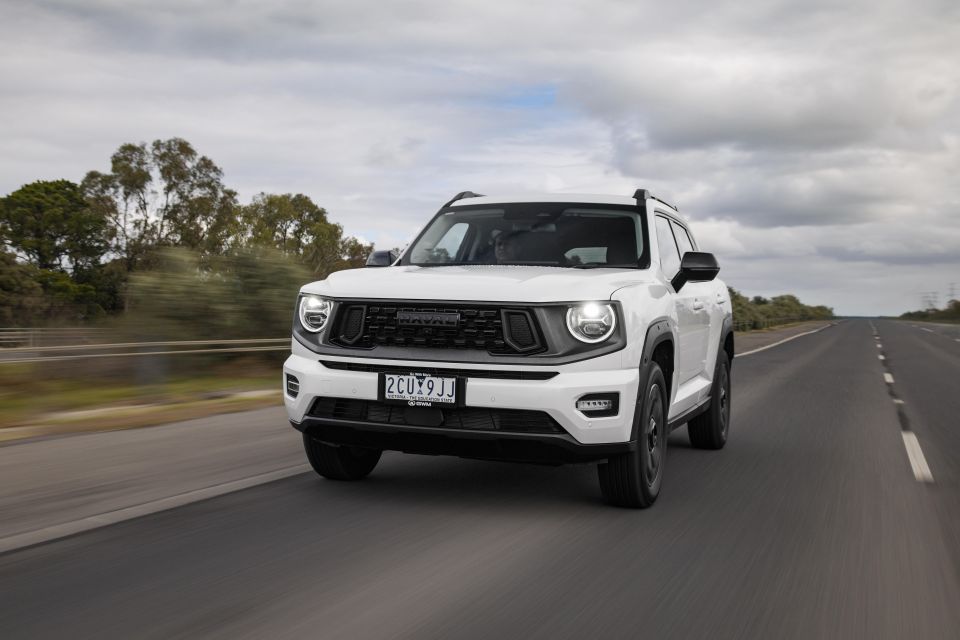
When you jump in, you’ll be greeted with a relaxing hip-hop-esque tune to ‘introduce’ the car. It’s a bit of fun, and not nearly as obnoxious as the vocal greetings you’ll receive in something like the similarly sized Deepal S07 electric SUV.
Once you set off, you’ll find the H7’s ride quality is good, surprisingly good. It’s nowhere near as wallowy and soft as Chinese cars can be, instead leaning on the firmer side but staying nice and comfortable.
It handles bumps and imperfections with composure, which is interesting given that, as far as we know, the H7 hasn’t received any Australian tuning under GWM’s new local chassis development program.
Road and wind noise are also kept to a minimum, but the powertrain setup is merely adequate.
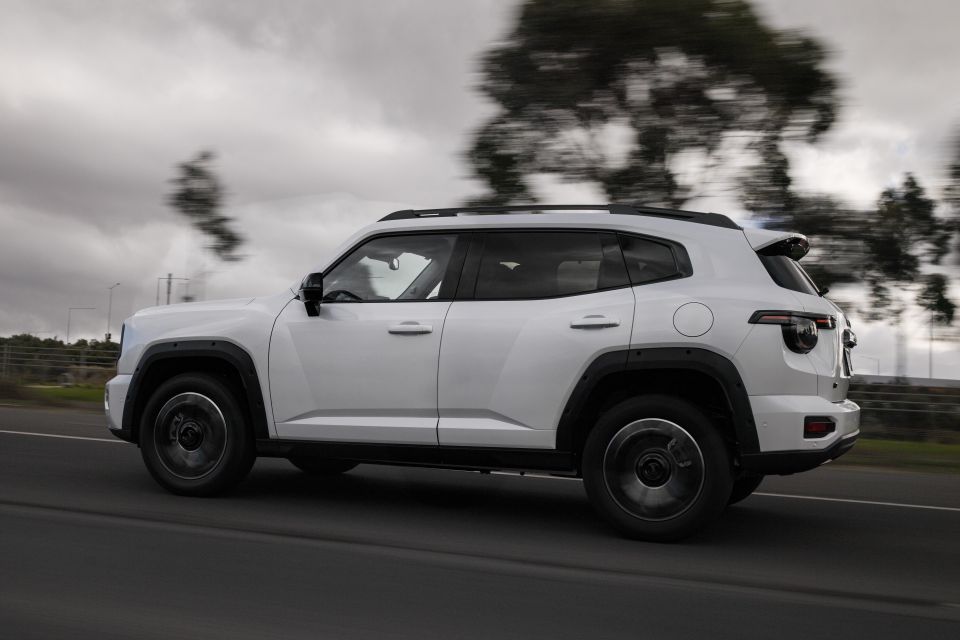
This is where the cracks start to show. The powertrain is certainly smooth, and acceleration through the engine’s rev range is predictable and consistent.
Its hybrid portion also seems competent, and you’ll notice the H7 flicking between petrol and electric power fairly frequently. Only on occasion will you notice any clunk when the car switches between the two power sources, and it’s generally well-sorted.
Throttle response isn’t great though. It’s fine in normal, low-demand driving, but when you plant your right foot there’s a noticeable delay before the car takes off – this isn’t good if you need to pull out onto a high-speed road, or make an overtake.
It’s astounding that so little happens for so long in this context. It’s almost as if the car has to wind up the engine with a hand crank. There’s eventually a fair amount of torque, but the delivery is so doughy that you’d be forgiven for thinking it was slow.
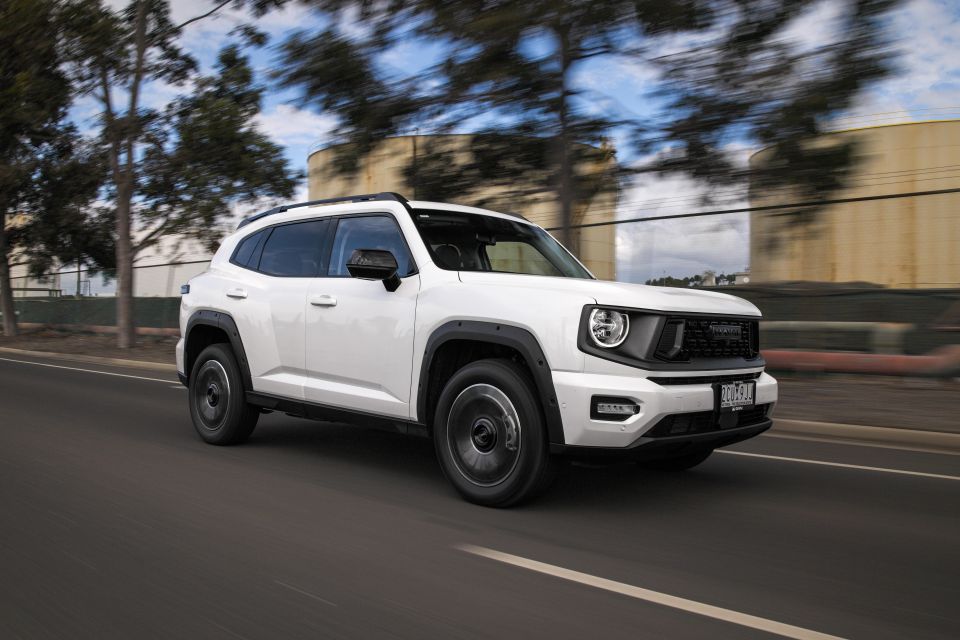
It’s also front-wheel drive only, which is something you’ll be reminded of when trying to accelerate with the wheels turned. You’ll get wheelspin for days, but there’s surprisingly little torque steer because power delivery isn’t sharp enough for that.
The H7 will also continue to accelerate for a second after you jump off the throttle quickly, something we’ve also experienced in the GWM Cannon. It’s disconcerting at first, but at least the engine itself doesn’t sound bad under load.
But there’s a more fundamental flaw when it comes to the braking system. Frankly, the brake pedal feels terrible.
Light inputs will hardly slow the car at all, while pressing the pedal slightly further will jam on the brakes almost uncontrollably. You’ll naturally ease off in response, completely disengaging the brakes, leading you to press them again and arrive at one of two conclusions.
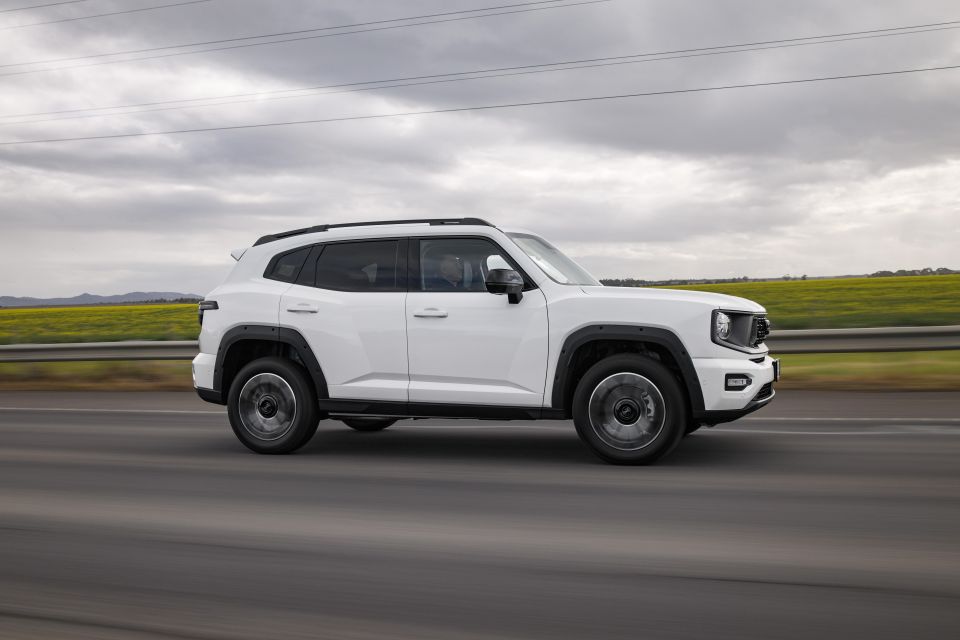
Where expert car reviews meet expert car buying – CarExpert gives you trusted advice, personalised service and real savings on your next new car.
One is that the car will jam on the brakes again, but harder than before, and the other is that the brakes will suddenly feel like they’re made of wood, offering so little stopping force that you’ll really have to stand on the pedal to slow down.
Other times, you’ll just be given barely any stopping force, again forcing you to press the pedal way harder than should be necessary. The worst part is that none of this is predictable, which makes it not only difficult to crawl along in heavy traffic, but also potentially dangerous.
This, combined with the very poorly tuned driver safety systems, makes the H7 a challenge to drive. The car’s driver monitor will ping you for no apparent reason, even if you’re looking straight ahead while driving… like you’re supposed to.
The “passive” lane-keep assist will pick and choose its moments to flare up, wrestling you for control of the wheel even if you’re in the middle of your lane. Admittedly, this is at its worst around bends on the freeway, when it’s like the car thinks you’re going to carry on in a straight line instead of following the road. These systems can be disabled, but that’s not the point.
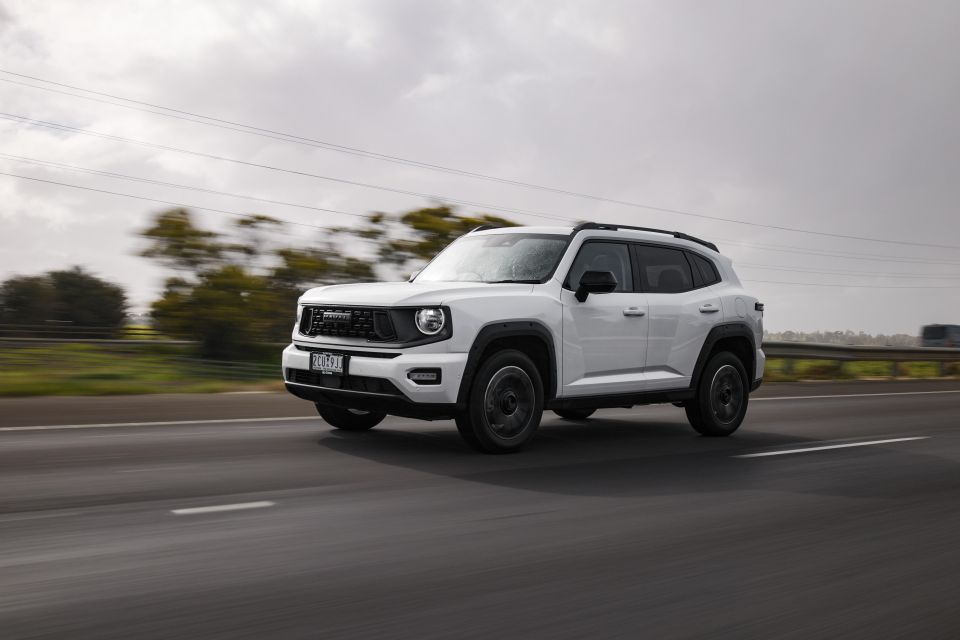
Adaptive cruise control is good enough at matching the speed of traffic around, but it isn’t easy to trust the associated lane-centring system. Its steering inputs are quite abrupt instead of being smooth, and it feels like you’re trying to steer a video game car using a PlayStation joystick.
Body control around turns isn’t fantastic either, and the H7 feels huge on the move. There’s quite a bit of body roll once speeds pick up in bends, and it can feel quite wobbly on changes of direction.
The light steering doesn’t help with this, but it at least becomes heavier when you engage Sport mode. Contrary to that mode’s name, the throttle response doesn’t sharpen up nearly as much as we’d have liked.
Finally, the car’s cameras are of decent quality, but a downside is that the reversing camera automatically switches to a blurry and unhelpful top-down view when backing up close to a wall, making it difficult to gauge distance.
To see how the GWM Haval H7 stacks up against its rivals, use our comparison tool
At launch, the GWM Haval H7 is only available in one fully loaded variant.
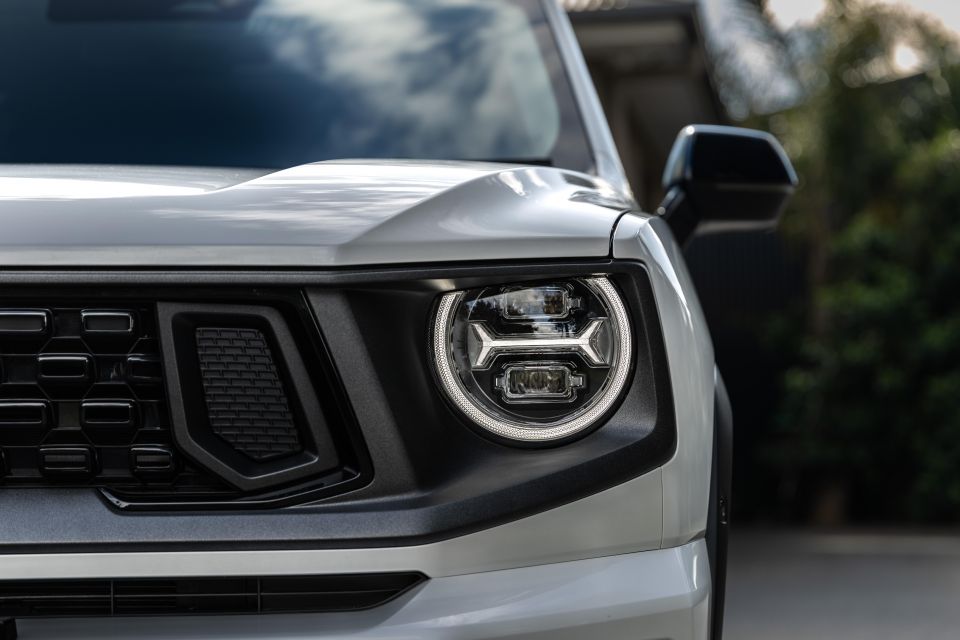

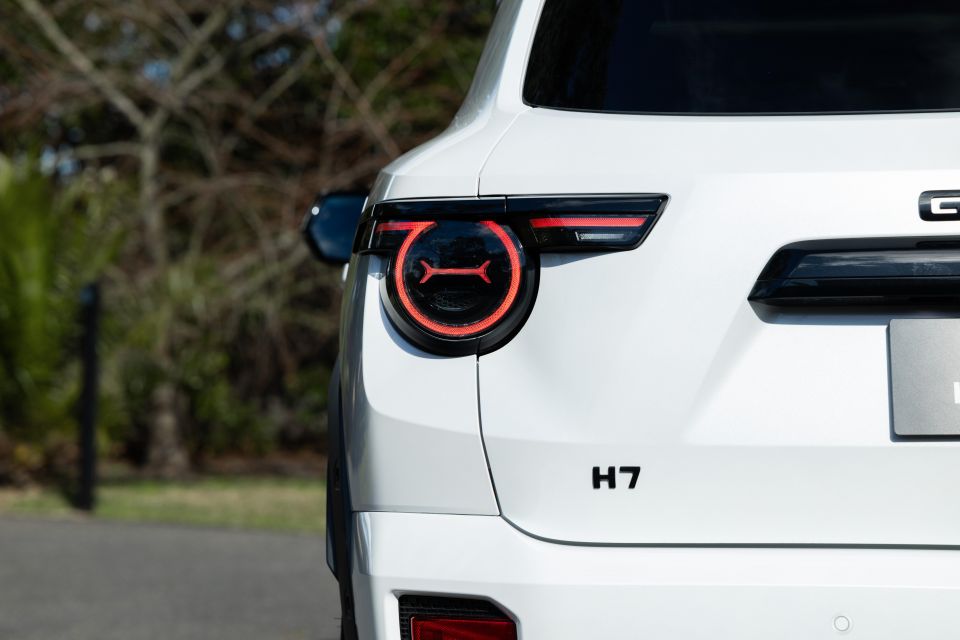
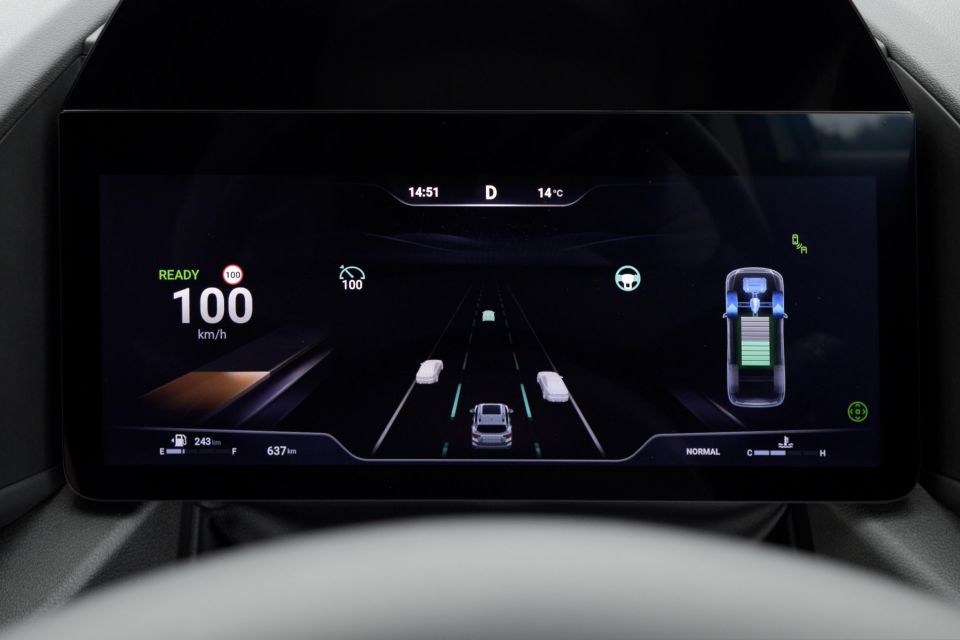
2025 GWM Haval H7 Vanta equipment highlights:
To see how the GWM Haval H7 stacks up against its rivals, use our comparison tool
Independent auto safety authority ANCAP has yet to publish a rating for the GWM Haval H7.
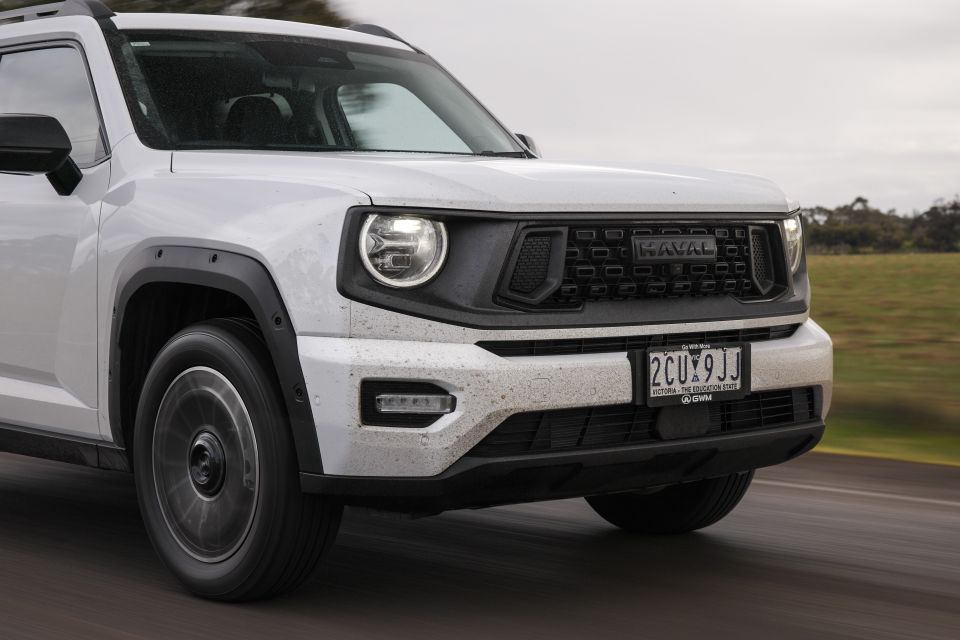
Standard safety equipment includes:
To see how the GWM Haval H7 stacks up against its rivals, use our comparison tool
As with the rest of the GWM range, the H7 is backed by a seven-year, unlimited-kilometre vehicle warranty and an eight-year, unlimited-kilometre hybrid battery warranty.
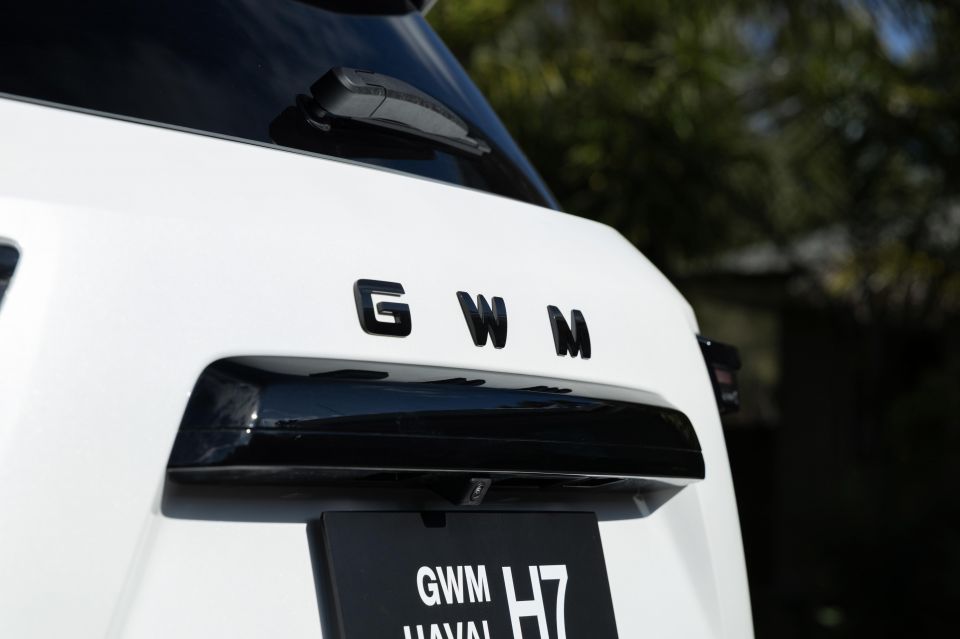
| Servicing and Warranty | GWM Haval H7 |
|---|---|
| Warranty | 7 years, unlimited kilometres |
| Battery warranty | 8 years, unlimited kilometres |
| Roadside assistance | 5 years |
| Service intervals | 12 months, 15,000km (except 10,000km first service) |
| Capped-price servicing | 5 years |
| Average annual capped price-service cost | $429 |
| Total capped-price service cost | $2145 |
The first service is required after 12 months or 10,000km, whichever comes first, while subsequent services are required every 12 months or 15,000km.
GWM service pricing, accurate as of August 2025, is detailed below.
| Service | Price |
|---|---|
| 1yr, 10,000km | $250 |
| 2yrs, 25,000km | $350 |
| 3yrs, 40,000km | $525 |
| 4yrs, 55,000km | $670 |
| 5yrs, 70,000km | $350 |
For context, the H6 Hybrid costs the same to service over five years.
To see how the GWM Haval H7 stacks up against its rivals, use our comparison tool
Buy your new car without the stress. It's fast, simple and completely free.

Great service from Travis and team, second time I have used this business would not hesitate to recommend them to anyone
Craig C.
Purchased a Ford Ranger in Sunshine Coast, QLD
CarExpert helped Craig save $7,224 on his Ford Ranger, now let us save you on your next new car.
Get your BEST priceThe H7 is disappointing, especially when you consider GWM has been on a strong run with vehicles like the Cannon Alpha and the latest H6.

It just doesn’t feel finished. A few more laps around the development test track or more hours spent around town would surely have revealed a lot of the issues we experienced, as we didn’t put the car through anything that a typical owner wouldn’t.
Bear in mind, the H7’s performance is in no way representative of GWM’s cars as a whole. We’ve been impressed by several of its latest models, and the effort it’s putting towards local chassis tuning and development speaks volumes about the standards it’s holding itself to.
For that reason, it’s impossible to imagine GWM Australia being satisfied with this vehicle’s performance. With its chunky design, it’s not only an aesthetic outlier in the Haval lineup but an outcast in terms of on-road performance when compared with the H6 or even the Jolion, both of which are rightfully posting decent sales figures.
If you’re looking for a well-executed mid-size hybrid SUV from GWM, get the H6 Lux Hybrid and save $6000 while you’re at it.
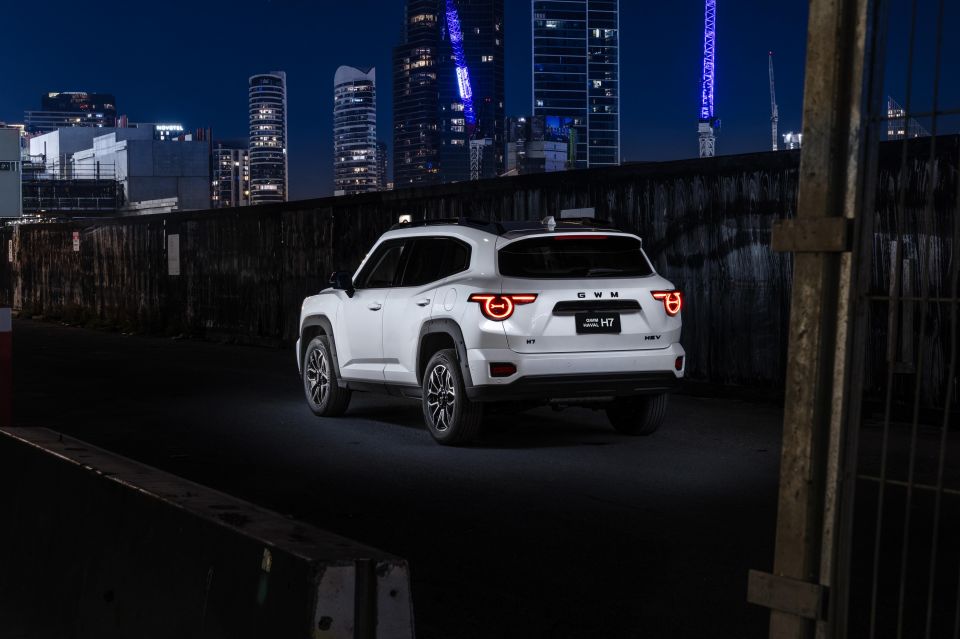
CarExpert can save you thousands on a new GWM Haval H7. Click here to get a great deal.
Click the images for the full gallery
Where expert car reviews meet expert car buying – CarExpert gives you trusted advice, personalised service and real savings on your next new car.
Max Davies is a CarExpert journalist with a background in regional media, with a passion for Japanese brands and motorsport.


William Stopford
13 Hours Ago


Andrew Maclean
1 Day Ago
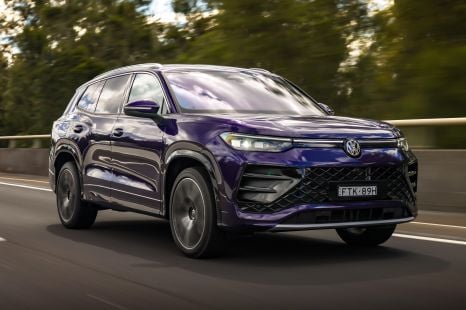

Damion Smy
4 Days Ago
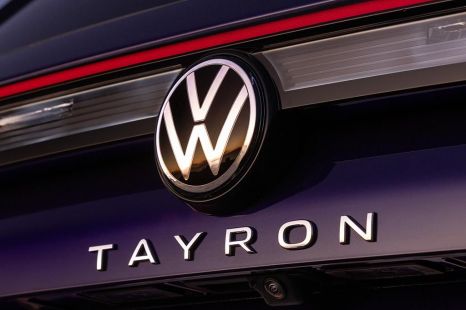

Damion Smy
4 Days Ago
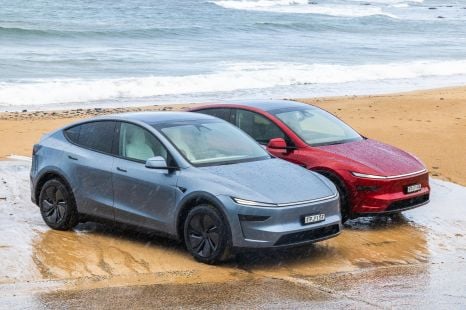

William Stopford
8 Days Ago
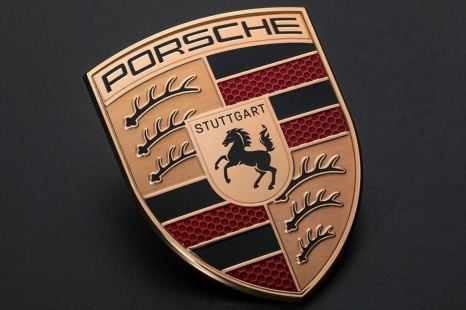

Damion Smy
9 Days Ago